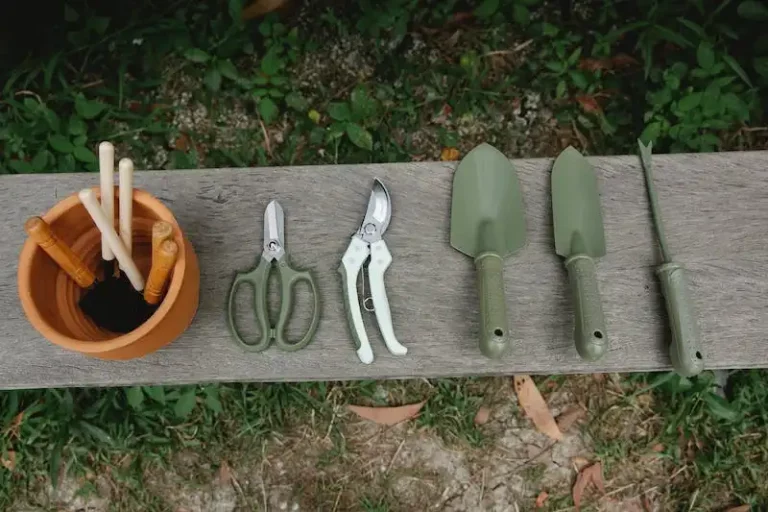Shallots are an essential ingredient in many gourmet dishes, prized for their delicate flavor and unique texture. These small, bulbous plants are easy to grow and require minimal care. With the right soil, planting techniques, and maintenance, you can enjoy a plentiful harvest of shallots that will elevate your culinary creations to new heights.
One of the easiest varieties to grow is the shallot Allium oschaninii, also known as the “true” shallot. This plant thrives in well-drained soils and can be planted in both fall and spring. It is important to choose a planting site that receives plenty of sunlight, as shallots need at least six hours of direct sunlight each day to mature properly.
When planting shallots, use shallow containers or raised beds to prevent waterlogging and soil compaction. Shallots should be planted in rows about 6 inches apart, with each plant spaced 4 to 6 inches apart within the rows. Make sure to plant the shallots with the pointed end facing up and the tips of the bulbs just level with the soil surface.
Shallots can be grown from either seeds or sets (small bulbs). Planting sets is the easiest and most common method, as it saves time and guarantees a higher success rate. Sets can be purchased from a reputable garden center or saved from the previous year’s harvest. If using sets, plant them in early spring or early fall, depending on your climate.
Once planted, shallots need regular watering, especially during dry spells. However, be careful not to overwater, as shallots are prone to mildew if their leaves stay wet for extended periods. A light application of organic fertilizer at planting time and again in early summer can help ensure healthy growth.
It is important to keep the planting area weed-free to prevent competition for nutrients and resources. In addition, shallots benefit from regular pruning to promote better airflow and discourage diseases.
When the shallot greens start to yellow and wither, and the bulbs have developed a papery skin, they are ready to harvest. Gently lift the bulbs from the soil and let them cure in a cool, dry, and well-ventilated place for a week or two. After curing, shallots can be stored in a cool, dark location for several months.
Shallots are a versatile and rewarding addition to any gourmet gardener’s repertoire. With proper care and attention, you can enjoy a bountiful harvest of these flavorful and elegant vegetables, ready to be used in your next haute cuisine creation.
Shallots – Key Growing Information
Shallots are a type of onion that can be spring-planted. They have a thin skin and grow in tubular forms. Unlike other onions, shallots don’t form a bulb but instead produce clusters of smaller bulbs called cloves. Shallots are white and have a papery skin. They are known for their mild and flavorful taste, which is similar to onions but with a hint of garlic.
When planting shallots, it is important to choose a location with well-draining soil. Shallots are shallow-rooted and prefer a shallow planting depth of about 1 inch. They can be propagated from sets, which are small bulbs that are planted in the ground to grow a new plant. Shallots can also be grown from seed, but this method takes a longer time to produce a mature plant.
Shallots are typically harvested in the summer when the foliage turns yellow and starts to dry out. To harvest shallots, carefully lift them from the ground using a garden fork or shovel. Gently brush off any excess soil and let the shallots dry in a warm, dry place for a week or two. Once dry, the shallots can be stored in a cool, dark location for several months.
When planting shallots, it’s important to water them regularly to keep the soil moist, but not overly wet. Shallots prefer a moderate amount of water and don’t tolerate humidity or excessive watering. Mulching the soil around the plants can help to retain moisture and prevent weed growth.
Shallots can be grown in containers, but they require a larger pot to allow for proper root development. The containers should have good drainage to prevent waterlogged soil, which can lead to fungal diseases. It’s also important to provide support for the shallot plants as they grow to prevent bending or breaking of the foliage.
For optimal growth, shallots should be planted in full sun. They prefer a moderate to heavy feeding with a balanced fertilizer. The fertilizer should be applied according to the manufacturer’s instructions to avoid overfeeding, which can lead to excessive foliage growth at the expense of bulb development.
Shallots are a popular ingredient in haute cuisine cooking. They can be used in a variety of dishes, from soups and sauces to stir-fries and salads. Shallots can be chopped, sliced, or minced and are often used in recipes that call for a milder flavor than regular onions. When cooked, shallots add a sweet and slightly caramelized flavor to dishes.
In conclusion, growing shallots requires some specific care and attention. With the right planting and watering techniques, you can enjoy a bountiful harvest of shallots that will enhance your culinary creations.
From the Grower’s Library
When it comes to growing shallots for haute cuisine use, there are several important factors to consider. Fertilizing is key to promoting healthy growth, and many growers prefer to use organic methods to ensure their plants produce the best possible food.
Knowing how to properly plant shallots is also essential. They are typically planted in the fall, around 2-3 weeks before the first frost, or in the early spring. If planting in the fall, it is important to slice off any greens and store them separately for use in the kitchen, as fall-planted shallots do not typically produce mature bulbs. For spring-planted shallots, the whole bulb can be planted.
Shallots prefer a sunny location with well-draining soil. Make sure to give them enough space to grow, as they will form clusters of shallots. Depending on your geographic location, shallots may need to be mulched to protect them from extreme temperatures.
While growing shallots, you may encounter some common problems. Shallow planting can cause bulbs to push out of the soil, while a lack of sunlight may result in long, white roots. Storing shallots at too high of a temperature can cause premature sprouting, while storing them at too low of a temperature can prevent them from bulbing up.
It is also important to note that shallots can cross with other alliums, such as onions or garlic, so if you want to grow true shallots, it is best to keep them separate from these other plants.
When it comes time to harvest your shallots, the process is quite simple. Once the greens have started to yellow and die back, use a garden fork or your hands to gently lift the clusters out of the soil. Look for mature shallots that are firm and have dry, papery skin.
After harvesting, you can store shallots in a cool, dry place for several months. To prevent them from sprouting, make sure they are cured before storing. This can be done by laying them out in a single layer in a warm and well-ventilated area for about 7-10 days.
In conclusion, growing shallots for haute cuisine use requires some knowledge and attention to detail. By following these tips and troubleshooting any problems that arise, you will be able to enjoy the quick and gourmet addition that shallots bring to your kitchen.
Questions
- What is a shallot?
- How much space is needed for growing shallots?
- What are the requirements for growing shallots?
- What variety of shallot is best for haute cuisine use?
- Can shallots be grown during the winter?
- What is the best time to plant shallots?
- What diseases do shallots encounter?
- How can fungal diseases be prevented?
- What is the flavor profile of shallots?
- Can shallot foliage be used in cooking?
- How are shallot cloves prepared for cooking?
- Can shallot cloves be frozen?
- How can one propagate shallots?
- What is the best way to store shallots?
- Can shallots be grown in containers?
- What is the ideal soil type for shallot-growing?
- What are the temperature and humidity requirements for shallots?
- How are shallots harvested?
- What are the signs of a mature shallot?
- Can shallots be grown in shaded areas?
- How do shallot prices compare to other vegetables?
- How long can stored shallots last?
- What is the best way to slice a shallot?
- What gourmet dishes can be enhanced by using shallots?
- Are there any pests that can affect shallots?
Growing Shallots For Haute Cuisine Use
Shallots are a versatile vegetable that adds a touch of elegance to any dish. These small bulbs are a favorite among gourmet chefs for their delicate flavor and subtle sweetness. Growing shallots in your own garden allows you to enjoy the freshest and highest quality ingredients right from your backyard.
Planting Shallots
The first step to growing shallots is to select a variety that suits your cooking requirements. There are different forms of shallots, including those that grow in clusters and those that form a single head. Depending on the variety, they can be fall-planted or spring-planted.
Shallots prefer well-drained soil that is rich in organic matter. They also require full sun to partial shade, and spacing the cloves about 6 inches apart is recommended. Shallots are relatively easy to grow and can thrive in most garden settings.
Care and Harvesting
Once planted, shallots need regular watering to keep the soil moist but not waterlogged. Mulching around the plants can help retain moisture and suppress weed growth. As the shallots grow, you can begin harvesting the greens for your kitchen. Simply cut off the shoots when they reach a desirable length.
The biggest challenge when growing shallots is determining when to harvest the bulbs. Shallots are ready to be harvested when the tops turn yellow and the foliage starts to dry out. Gently dig around the bulbs and lift them out of the ground. Be careful not to damage the thin papery skin that surrounds each bulb.
Storing Shallots
After harvesting, shallots can be stored for several months if done properly. Allow the bulbs to dry in a cool, dry, and well-ventilated area for a week or two. Once the outer skin becomes dry and papery, you can clean the shallots by gently brushing off any remaining soil.
You can store shallots in a mesh bag, a wooden crate, or a well-ventilated container. Keep them in a cool, dark place such as a pantry or cellar. Stored properly, shallots can last for up to several months after harvest.
Tips for the Grower
Some tips for successful shallot growing include selecting a well-drained location, providing adequate sunlight, and watering appropriately. Mulching and regular weeding can also help maintain the health of your shallot crops. Keep an eye out for pests and diseases, and take appropriate measures to prevent and control them.
Remember, growing shallots can be a rewarding experience for any kitchen gardener. With proper care and attention, you can enjoy a bountiful harvest of these gourmet ingredients right in your own backyard.



